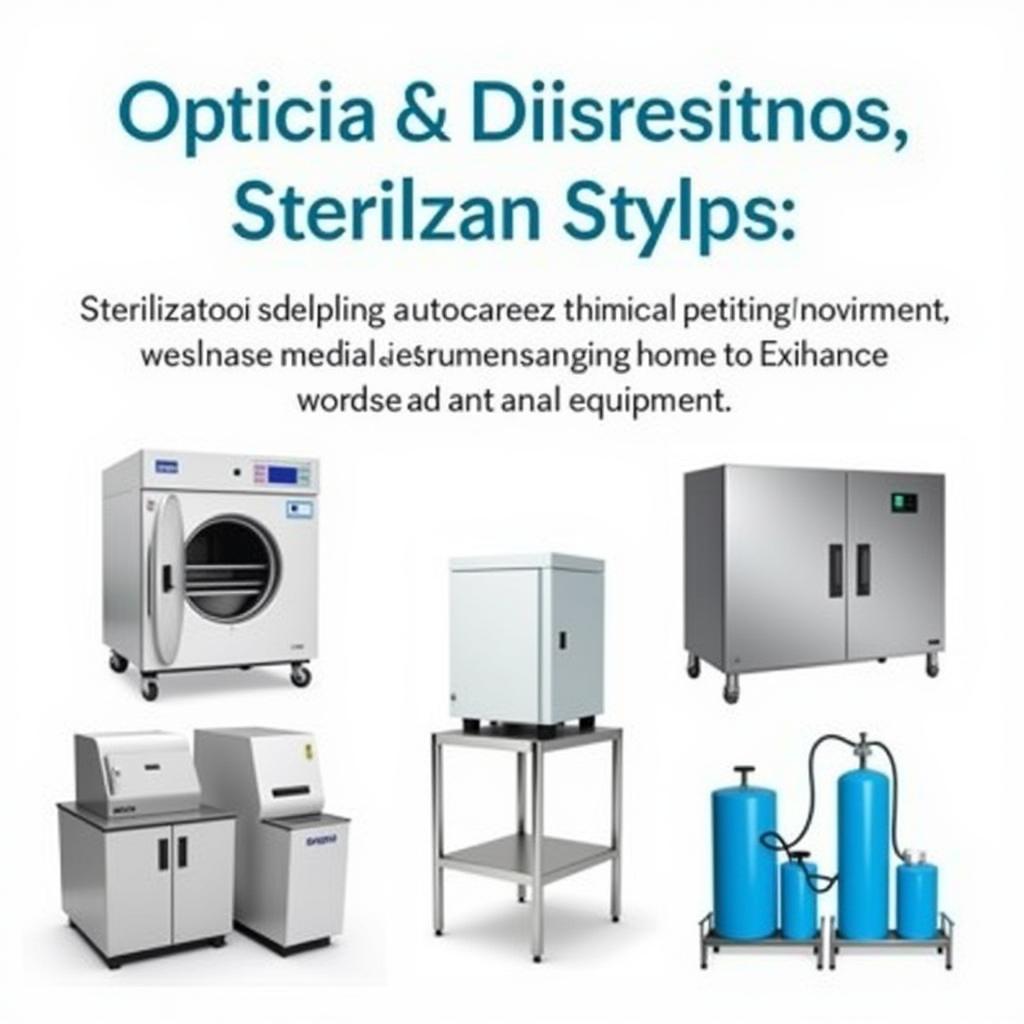The health care environment relies heavily on specialized tools and equipment to maintain hygiene, prevent infections, and ensure patient safety. These tools and equipment, from basic cleaning supplies to advanced diagnostic devices, play a crucial role in creating a healthy and effective health care environment. Choosing the right tools and equipment can significantly impact the quality of care delivered and the overall patient experience. This article will explore the critical tools and equipment used in a health care environment, highlighting their functions and importance.
 Essential Cleaning Tools for a Hygienic Healthcare Environment
Essential Cleaning Tools for a Hygienic Healthcare Environment
Essential Cleaning and Disinfection Tools
Maintaining a sterile environment is paramount in health care. Basic cleaning and disinfection tools are the first line of defense against harmful pathogens.
- Disinfectant Wipes: These pre-saturated wipes are convenient for quickly cleaning surfaces and equipment.
- Mops and Buckets: Used for larger areas, these tools require appropriate cleaning solutions for effective disinfection.
- Spray Bottles: Useful for applying disinfectants and cleaning solutions to hard-to-reach areas.
- Autoclaves: These devices sterilize equipment using high-pressure steam, eliminating bacteria, viruses, and spores.
 Personal Protective Equipment (PPE) for Healthcare Workers
Personal Protective Equipment (PPE) for Healthcare Workers
Personal Protective Equipment (PPE)
Protecting healthcare workers and patients from infectious diseases requires proper use of PPE.
- Gloves: Essential for preventing cross-contamination during patient care and handling of bodily fluids.
- Masks: Protect against airborne pathogens and prevent the spread of respiratory illnesses.
- Gowns: Provide a barrier against contamination from blood and other bodily fluids.
- Face Shields: Offer additional protection for the eyes and face from splashes and sprays.
Diagnostic and Monitoring Equipment
Accurate diagnosis and monitoring are vital for effective patient care. Several tools are essential in this area.
- Stethoscopes: Allow healthcare professionals to listen to heart, lung, and bowel sounds.
- Blood Pressure Monitors: Measure blood pressure to assess cardiovascular health.
- Thermometers: Measure body temperature to detect fever and monitor patient condition.
- Pulse Oximeters: Measure blood oxygen saturation levels, crucial for respiratory assessments.
If you’re interested in tools for maintaining a healthy environment outside of healthcare, check out our article on tools for taking care of the environment.
Specialized Equipment for Specific Procedures
Certain medical procedures require specialized tools and equipment to ensure safety and efficacy.
- Surgical Instruments: A wide range of instruments used during surgical procedures, including scalpels, forceps, and clamps.
- Ventilators: Provide respiratory support for patients who cannot breathe on their own.
- Defibrillators: Deliver electric shocks to restore normal heart rhythm in cases of cardiac arrest.
- Infusion Pumps: Administer fluids and medications intravenously at controlled rates. Even seemingly simple tasks, such as nail care, require specific tools, as detailed in our nail care tools and equipment module grade 8 article.
Importance of Proper Maintenance and Sterilization
Ensuring the proper functioning and hygiene of Health Care Environment Tools And Equipment requires regular maintenance and sterilization. This includes:
- Regular cleaning and disinfection: Following established protocols for cleaning and disinfecting all surfaces and equipment.
- Calibration and testing: Ensuring the accuracy and reliability of diagnostic and monitoring equipment.
- Proper storage: Storing equipment in a clean and dry environment to prevent contamination and damage.
Maintaining the right tools for pediatric primary care is crucial, and you can find more information in our article about the best tools for pediatric primary care.
Health Care Environment Tools and Equipment: FAQs
What is the most important aspect of using health care environment tools and equipment?
Prioritizing patient and staff safety through proper hygiene and sterilization procedures.
How often should equipment be calibrated?
Calibration schedules vary depending on the equipment and manufacturer recommendations. Regular checks are essential.
What are the consequences of improper sterilization?
Improper sterilization can lead to infections, compromising patient health and safety.
 Sterilization Equipment for Healthcare Settings
Sterilization Equipment for Healthcare Settings
Conclusion
Health care environment tools and equipment are essential for providing safe and effective patient care. From basic cleaning supplies to advanced diagnostic devices, these tools play a crucial role in maintaining a hygienic environment, preventing infections, and ensuring accurate diagnosis and treatment. By prioritizing proper maintenance, sterilization, and training, healthcare facilities can optimize the use of these tools and equipment to deliver high-quality care and improve patient outcomes. Learn about other essential tools, such as those for cat care tools or tools required for lawn care.
For any assistance, please contact us via WhatsApp: +1(641)206-8880, Email: [email protected] or visit us at 910 Cedar Lane, Chicago, IL 60605, USA. Our customer service team is available 24/7.

Leave a Reply